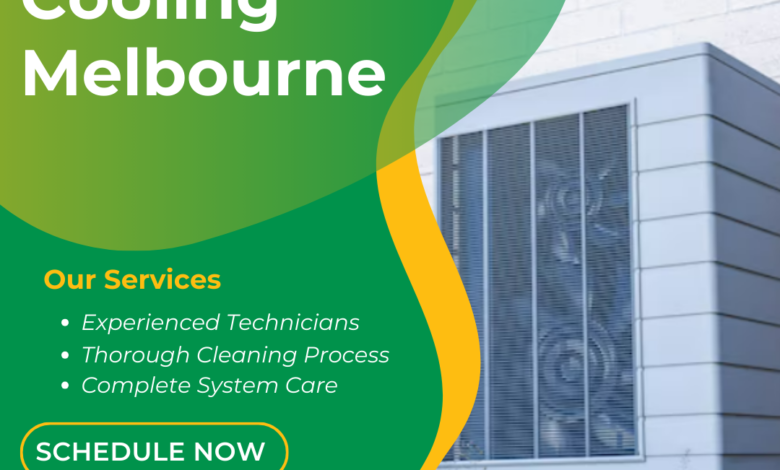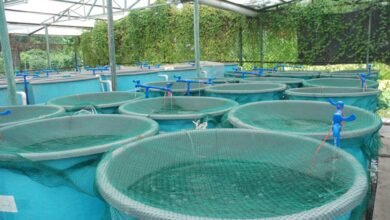
Introduction
When it comes to keeping your home cool in Melbourne’s hot summer months, choosing the right cooling system is crucial. With various options available, it’s essential to understand the differences between evaporative cooling and traditional air conditioning. This article will break down the initial costs, running costs, maintenance expenses, and long-term savings of both systems. By the end, you’ll have a clear understanding of which system might be best for your Melbourne home.
Understanding Evaporative Cooling
How Evaporative Cooling Works
Evaporative cooling, often referred to as a swamp cooler, operates by drawing warm air through water-soaked pads. As the air passes through these pads, it is cooled by evaporation and then circulated throughout the home. This system relies on the natural process of water evaporation to lower air temperature.
Benefits of Evaporative Cooling
Evaporative cooling offers several advantages:
- Energy Efficiency: These systems consume significantly less electricity compared to traditional air conditioning units.
- Cost-Effectiveness: Lower energy usage translates to reduced electricity bills.
- Eco-Friendly: Uses water as a cooling medium, avoiding harmful refrigerants.
- Fresh Air Circulation: Continuously circulates fresh air, improving indoor air quality.
Understanding Traditional Air Conditioning
How Traditional Air Conditioning Works
Traditional air conditioning systems use refrigerants to absorb and remove heat from the indoor air. This cooled air is then distributed throughout the home via ducts. These systems can provide precise temperature control, regardless of external conditions.
Benefits of Traditional Air Conditioning
Traditional air conditioning systems are known for:
- Consistent Cooling: Can maintain a set temperature regardless of outside humidity or temperature.
- Humidity Control: Effective at reducing indoor humidity, enhancing comfort levels.
- Versatility: Suitable for various climate conditions and adaptable to different home sizes and layouts.
Initial Costs
Initial Costs of Evaporative Cooling Systems
The initial cost of installing an evaporative cooling system is generally lower than that of traditional air conditioning. This is primarily due to the simpler technology and installation process involved. On average, homeowners can expect to spend less upfront when opting for evaporative cooling.
Initial Costs of Traditional Air Conditioning Systems
Traditional air conditioning systems often have higher initial costs. This includes the price of the unit itself and the more complex installation process, which requires extensive ductwork and electrical setup. However, this higher upfront investment can sometimes be justified by the advanced features and cooling capabilities these systems offer.
Running Costs
Energy Consumption of Evaporative Cooling
One of the significant advantages of evaporative cooling is its low running cost. These systems use considerably less electricity because they rely on a fan and water pump rather than a compressor. In Melbourne, where electricity prices can be high, this can lead to substantial savings on your energy bills.
Energy Consumption of Traditional Air Conditioning
Traditional air conditioners, while effective, are more energy-intensive. The compressor, fan, and refrigerant cycle require a significant amount of electricity, especially during peak usage times. This higher energy consumption results in higher monthly utility bills.
Maintenance Expenses
Maintenance Needs for Evaporative Cooling
Maintaining an evaporative cooling system is relatively straightforward and inexpensive. Regular maintenance involves:
- Cleaning or Replacing Pads: The cooling pads should be cleaned or replaced regularly to ensure efficient operation.
- Checking the Water Pump: Ensuring the water pump is functioning correctly and replacing it if necessary.
- Seasonal Shutdown: Properly shutting down the system at the end of the cooling season to prevent damage and mold growth.
Maintenance Needs for Traditional Air Conditioning
Traditional air conditioning systems require more intensive maintenance:
- Regular Servicing: Professional servicing to check refrigerant levels, clean coils, and ensure all components are working efficiently.
- Filter Replacement: Air filters need frequent replacement to maintain air quality and system efficiency.
- Potential Repairs: Over time, components such as compressors or fans may require repairs or replacement, adding to the maintenance costs.
Efficiency Comparison
Efficiency of Evaporative Cooling in Melbourne’s Climate
Melbourne’s climate, characterized by hot, dry summers, is ideal for evaporative cooling. These systems perform exceptionally well in low-humidity environments, providing effective and energy-efficient cooling.
Efficiency of Traditional Air Conditioning in Melbourne’s Climate
Traditional air conditioning systems are versatile and can handle Melbourne’s varied climate conditions. They perform well even on hot and humid days, offering reliable and consistent cooling.
Environmental Impact
Environmental Impact of Evaporative Cooling
Evaporative cooling is considered more environmentally friendly due to its lower energy consumption and use of water instead of chemical refrigerants. This results in a smaller carbon footprint and less environmental impact.
Environmental Impact of Traditional Air Conditioning
Traditional air conditioning systems have a larger environmental impact due to higher electricity usage and the potential for refrigerant leaks, which can harm the atmosphere. Modern units are more efficient, but their environmental footprint is still more significant compared to evaporative cooling.
Long-Term Savings
Long-Term Savings with Evaporative Cooling
The long-term savings with evaporative cooling are substantial, mainly due to lower energy consumption and maintenance costs. Over time, the reduced electricity bills and minimal maintenance needs make it a cost-effective choice for many Melbourne homeowners.
Long-Term Savings with Traditional Air Conditioning
While traditional air conditioning systems have higher running costs, advancements in energy efficiency can help mitigate some expenses. Additionally, the ability to provide precise temperature control can lead to comfort and potential health benefits, which some homeowners might find worth the extra cost.
Case Studies and Real-Life Examples
Example of a Melbourne Home Using Evaporative Cooling
Consider a Melbourne family that installed an evaporative cooling system in their single-story home. They noticed a significant reduction in their monthly electricity bills and appreciated the constant circulation of fresh air. The system’s performance remained consistent even during the peak summer months, providing a comfortable living environment.
Example of a Melbourne Home Using Traditional Air Conditioning
Another case involves a Melbourne homeowner who opted for a traditional air conditioning system. Despite the higher initial and running costs, the family enjoyed the precise temperature control and effective humidity reduction. During particularly humid days, the traditional system provided a noticeable difference in comfort levels compared to their previous cooling solution.
User Experiences and Reviews
Feedback from Users of Evaporative Cooling in Melbourne
Many Melbourne residents using evaporative cooling systems have reported high satisfaction levels due to the system’s cost-effectiveness and energy efficiency. Users appreciate the eco-friendly aspect and the fresh air circulation, which enhances indoor air quality.
Feedback from Users of Traditional Air Conditioning in Melbourne
Traditional air conditioning users often highlight the reliable and consistent cooling performance. The ability to maintain a set temperature and control humidity levels are frequently cited benefits, making this system a preferred choice for those seeking maximum comfort.
Installation Process
Evaporative Cooling Installation in Melbourne
Installing an evaporative cooling system is relatively straightforward. The process involves:
- Assessment: Evaluating the home’s layout to determine the best placement for the cooling unit and ducts.
- Installation: Setting up the rooftop unit and connecting it to the ductwork.
- Testing: Ensuring the system operates correctly and efficiently.




